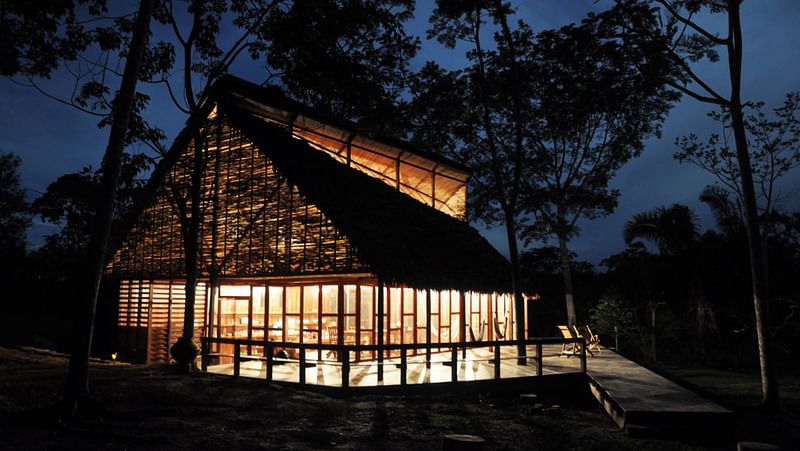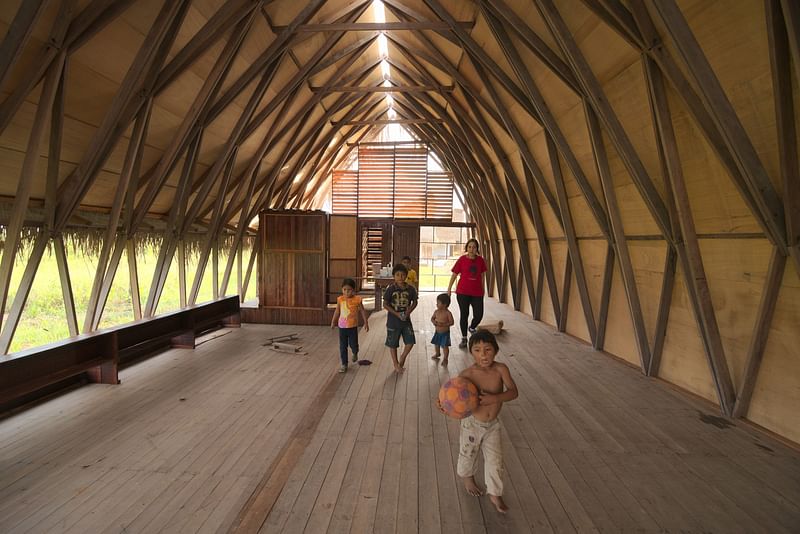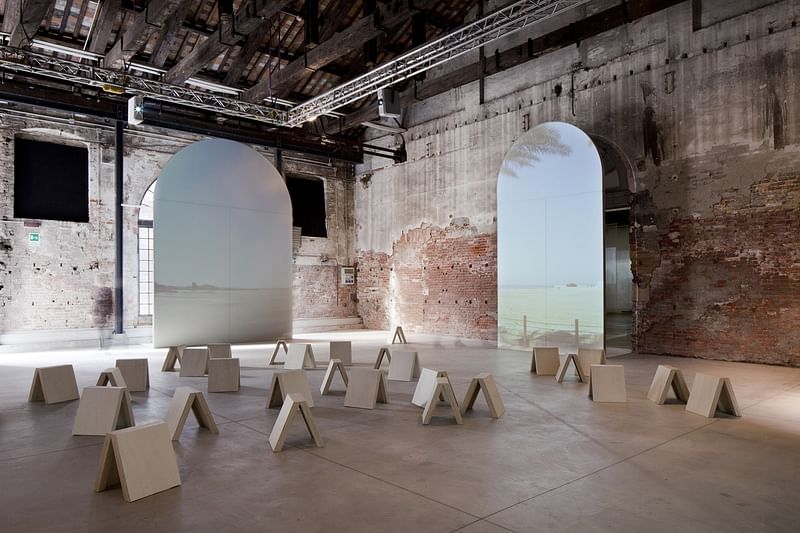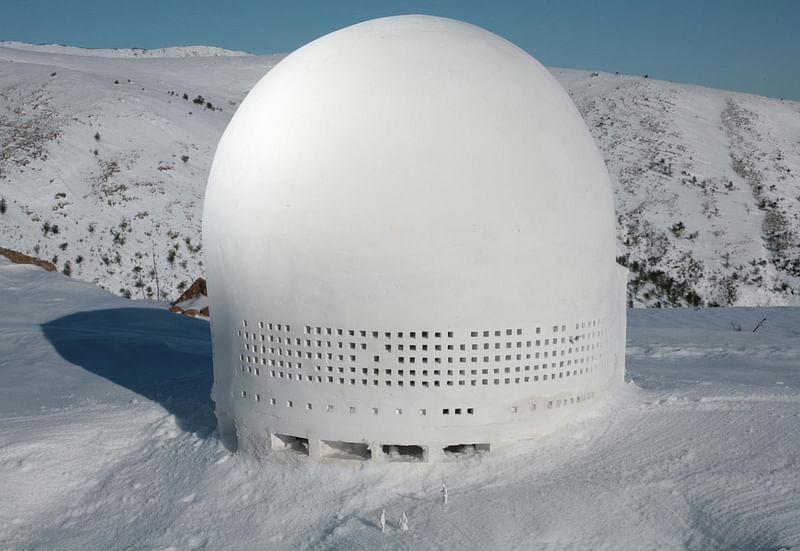Four 2016 Wheelwright Prize finalists from Chile, Italy, and Spain to compete for $100K grant
By Justine Testado|
Monday, Mar 28, 2016

Related
It's already that time of year when the Harvard Graduate School of Design will soon award their next Wheelwright Prize recipient. First established by the school in 1935, the prestigious prize is a $100,000 travel architectural research grant awarded to one lucky early-career architect. Originally intended for Harvard GSD alumni, the prize became an open international competition in 2013 that gives competitive early-career architects anywhere on the globe a chance to apply. A few iconic recipients include Paul Rudolph, Eliot Noyes, William Wurster, and I. M. Pei. More recently, Erik L’Heureux from Singapore won last year and Barcelona-based architect Jose M. Ahedo received the 2014 grant.
Out of nearly 200 applicants from 45 countries for 2016, the jury selected four finalists:
- Samuel Bravo, Samuel Bravo Arquitecto | Santiago, Chile
- Matilde Cassani | Milan, Italy
- Anna Puigjaner, MAIO | Barcelona, Spain
- Pier Paolo Tamburelli, baukuh architects | Milan and Genoa, Italy
In the coming weeks, the finalists will prepare to publicly present their work and Wheelwright research proposals at Harvard GSD on April 20. The winner is expected to be announced shortly thereafter.
Scroll down to learn more about the finalists and a glimpse of their works.
SAMUEL BRAVO — Samuel Bravo Arquitecto, Santiago, Chile (BArch 2009, Pontifical Catholic University of Chile)
Wheelwright proposal: Cultural Frictions: A Transference, From Traditional Architecture to Contemporary Production
RELATED COMPETITION 2016 Wheelwright Prize


Wheelwright proposal summary from the architect: "The journey aims to research endangered traditional architectures along great hydrographic basins of the world as both a physical and meaningful relation of peoples with landscape. Looking through particular constructions of landscape, the proposal will inquire how people deal with the friction of traditional spaces with modernity. On this basis, the project will explore a link between traditional architectures and contemporary production. The case- study will make an architectural record and propose a reflection in the form of small-scale architectural installations, in which a spatial, material or conceptual feature of culture interacts with local communities."
About: "Samuel Bravo is a licensed architect in Chile. He has worked in a variety of contexts in South America, from Patagonia to the Amazon, developing the relationship between traditional building practices and contemporary architectural production. He is a founding member of Tarapacá Project (2005-11), an initiative aimed at reconstructing heritage areas damaged by earthquakes....Since 2009, he has been working with the Shipibo, an indigenous community of San Francisco de Yarinacocha in the Amazon rainforest in Peru. He collaborated with Sandra Iturriaga on the design of the Ani Nii Shöbo Healing Center (2009–12), a shamanic lodge and retreat, and the Nii Juinti traditional school (2014) for Shipibo children. His work has been exhibited in the 16th and 17th Architectural Biennale in Santiago de Chile and the 12th International Architecture Exhibition at the Venice Biennale (2010), and has been published in ARQ, CA, and Casabella. Since 2012, Bravo has taught architectural design as assistant professor at Pontifical Catholic University of Chile."
MATILDE CASSANI — Milan, Italy (BArch 2005, Politecnico di Milano; Postgraduate degree 2011, Architecture and Urban Culture, Universitat Politècnica de Catalunya; Ph.D. 2013, Spatial Planning and Urban Development, Politecnico di Milano)
Wheelwright proposal: Once in a Lifetime: The Architecture of Ritual in Pilgrimage Sites

RELATED NEWS Erik L’Heureux wins 2015 Wheelwright Prize


Wheelwright proposal summary from the architect: "Once in a lifetime, the religious man takes a journey in search of spiritual significance. The pilgrim, gathers with thousands of people in a specific site: the place of birth or death of founders or saints, or the place of connection with the divine, the location where miracles were performed, or where a deity is said be housed, or a place that is seen to have special spiritual powers. The research looks at some of the world’s largest pilgrimage sites. The focus is on the pilgrimage site as a place where architecture is created and designed by the repetition of series and series of ceremonies and rituals."
About: "Matilde Cassani directs her own practice in Milan, working in architecture, art, installation design, and exhibition curation. After receiving her architecture degree from the Politecnico di Milano, she worked in Sri Lanka as a consultant for the Deutsche Gesellschaft für Technische Zusammenarbeit (GTZ), a German organization dedicated to international technical cooperation for sustainable development. Her work focused on post-tsunami reconstruction and launched her interest in the spatial implications of cultural pluralism in the contemporary Western urban context, which defines her practice today. Many of her projects deal with the varied uses and experiences of public places...Her work has been published in Architectural Review, Domus, Abitare, Arqa, Arkitecktur, and MONU. She was an artist-in-residence at Akademie Schloss Solitude in Stuttgart (2011) and at the Headlands Center for the Arts in Marin, California. She has taken part in many international conferences and lectured in various international Universities such as Columbia University in New York and L’Ecole Spéciale d’Architecture in Paris. Cassani currently teaches at the Politecnico di Milano, her alma mater, and at the Domus Academy."
ANNA PUIGJANER — MAIO, Barcelona (BArch 2004, MArch 2008, and Ph.D. 2014, Escola Tècnica Superior d’Architecture de Barcelona-Universitat Politècnica de Catalunya [ETSAB-UPC])
Wheelwright proposal: Kitchenless City: Architectural Systems for Social Welfare


Wheelwright proposal summary from the architect: "Architecture goes beyond physicality. At MAIO I design spatial systems, rules and instructions that encourage appropriation and changeability over time. That is also what I research about. At the verge of the XX c. in New York the house was understood as an open system: the domestic realm was wider than its actual limits. It was “unfinished” —kitchenless—and relied on urban housekeeping services that allowed to shrink expenses, waste and labor. Although many of those cases have disappeared during the XX c., they had a worldwide influence on similar buildings that are still in use. These kitchenless examples remain good references to address new domestics systems for a better social welfare."
About: "Anna Puigjaner is the cofounder of MAIO, an architectural office in Barcelona with an interest in flexible systems, including notions such as variation, ephemerality, and ad hocism. Founded in 2005 with partners Maria Charneco, Alfredo Lérida, and Guillermo López, MAIO was a finalist in the MoMA PS1 Young Architects Program in 2014 and participated in the 2015 Chicago Architecture Biennial with an installation called Floating, a series of inflated columns that traveled throughout the space...Puigjaner’s personal work explores the potentiality of spatial orders, constraints, rules, and instructions in between the domestic and the urban sphere. She is currently the editorial director of architectural magazine Quaderns d’Arquitectura i Urbanisme, and teaches architecture at her alma mater, the Escola Tècnica Superior d’Architecture de Barcelona-Universitat Politècnica de Catalunya, and the Massana School of Design. She has also lectured at Columbia University GSAPP, Yale University, and Universidade de Lisboa, among other universities."
PIER PAOLO TAMBURELLI — baukuh architects, Milan and Genoa (MArch 2002, University of Genoa; Advanced MArch 2004, The Berlage Institute)
Wheelwright proposal: Wonders of the Modern World

RELATED NEWS Jose M. Ahedo wins the 2014 Wheelwright Prize


Wheelwright proposal summary from the architect: "My intention is to develop a research on contemporary ritual landscapes based on “ritualistic” categories. This research will unfold through a theoretical investigation of the fundaments of Modern Architecture and through the development of a possible critique of its implicit liberal anthropology, and through a description of contemporary territories that have been shaped by human motives that we cannot avoid calling “ritualistic.” The research aims at the production of an “Atlas of the Wonders of the Modern World.” This Atlas will include “ritualistic” landscapes produced – in the complete indifference of Modern architecture – after 1753 (the year of publication of Laugier’s Essai)."
About: "Pier Paolo Tamburelli is the founder, along with Paolo Carpi, Silvia Lupi, Vittorio Pizzigoni, Giacomo Summa, and Andrea Zanderigo, of the firm baukuh. Established in 2004, the firm has realized a wide range of work, including public and mixed-use buildings, historic renovations, masterplans, and exhibition designs...baukuh took part in the Rotterdam Biennale (2007 and 2011), Istanbul Biennial (2012), Venice Architecture Biennale (2008 and 2012), and Chicago Architecture Biennial (2015), and was part of the research group for the Dutch National History Museum (2011). Tamburelli worked with Domus (2004–07) and is one of the founders and editors of the architectural magazine San Rocco and of the websiteThe Tomorrow. He has lectured at a number of schools and cultural institutions...Tamburelli has taught at the PUSA Aleppo, the Berlage Institute Rotterdam, and University of Illinois at Chicago. He is currently a visiting professor at the Politecnico di Milano."
The 2016 jury includes: Eva Franch, architect and Director of Storefront for Art and Architecture in New York; Jeannie Kim, Assistant Dean of Academic Programs at the John H. Daniels Faculty of Architecture, Landscape and Design at the University of Toronto; Kiel Moe, Associate Professor of Architecture and Energy at Harvard GSD; Rafael Moneo, Josep Lluis Sert Professor of Architecture at Harvard GSD; and Benjamin Prosky, Executive Director of the American Institute of Architects New York Chapter (AIANY) and the Center for Architecture. The standing jury members are: Mohsen Mostafavi, Dean of Harvard GSD and Alexander and Victoria Wiley Professor of Design; and K. Michael Hays, Eliot Noyes Professor of Architectural Theory and Associate Dean of Academic Affairs at Harvard GSD.

Share
0 Comments
Comment as :